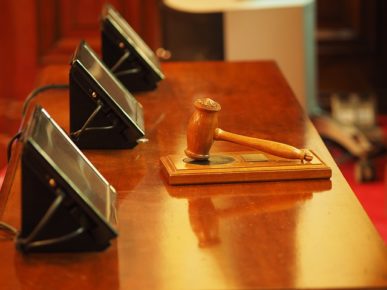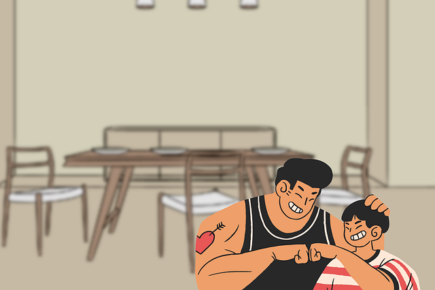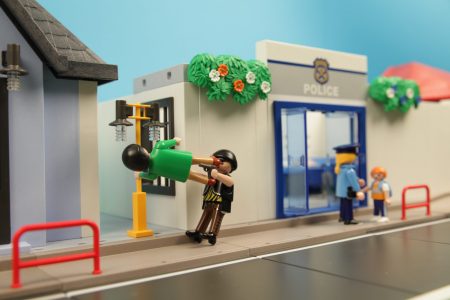Students need all the help they can get to win a school expulsion hearing. One of my favorite cases to attack expulsion hearings, particularly on appeal, is John A. v. San Bernardino City Unified School District, decided in 1982 by the California Supreme Court. This case found that it was improper to expel student John A. without testimony of any witnesses at his expulsion hearing.
All these decades later, the case is still valuable for student’s facing expulsion.

What Happened to John A?
In this beautiful case, the California Supreme Court evaluated an expulsion of John A. for allegedly being involved in a large fight witnessed only by students. The situation occurred after a football game and John A. was alleged to have chased and hit other students and yelled “White boy.”
At John A’s expulsion hearing, no direct witnesses (e.g. students who actually saw or were involved in the fight) came and testified, other than John A., who disputed the allegations. Rather, the district’s case revolved around reading a school summary and written witness statements.
When John A. spoke, he explained that he did not strike nor kick the boys involved. Instead, he stated that the students were “play boxing.” He denied any racial connection, that he yelled derogatory terms, or that he chased anyone. John A. also disputed the injuries alleged to have happened to two students.
Unfortunately, this does not sound unlike student expulsion hearings today, which often have weak evidence and little, if any, live testimony.
Student Lost in Initial Appeals
The district expelled John A. for an “unprovoked attack on two students.” On appeal to the county board, of education the expulsion was upheld.
The lower court allowed the district to submit 30 declarations showing that there had been threats against students involved in school hearings (to try to support the lack of live testimony in John A’s matter). However, no proof of any threat from John A. to the witnesses in his matter was provided.
The lower courts upheld the school expulsion.

California Supreme Court Overturns the Student’s Expulsion
The California Supreme Court overturned John A’s expulsion, ordering it expunged from his school records. Justice Broussard explained that a school district “may not rely on administrative reports when evidence is conflicting and witnesses are readily available.”
This is also currently reflected in Education Code 48918(f) which states that no student may be expelled based on hearsay alone.
Risks From Lack of Live Testimony
The Court was concerned about the lack of live witness testimony: “While the risk of retaliation may be substantial in some cases, it does not warrant broad reliance on reports in all cases or in the instant case where there is no showing or finding of a significant and specific risk of harm...”
The Court explained that if a school district wishes to rely on written testimony from unidentified witnesses, they must show that “disclosure of identity and producing the witnesses would subject the informant to significant and specific risk of harm….”
This is further clarified in Education Code 48918(f)(2) which requires a demonstration of “unreasonable risk of psychological or physical harm.”

Beautiful Case for Students Being Expelled
John A. is useful as it supports students’ fair hearing rights, and provides an example of what school districts should not do.
Schools generally cannot expel a student based solely on written statements without direct testimony showing the alleged act(s) occurred.
Also, if a school wishes to exclude a witness and use a written statement instead, they must make a specific showing regarding potential risk of harm to the witness if they testify. The legislature defines this further in Education Code 48918(f) as “unreasonable risk of psychological or physical harm.”
The John A. Takeaways
Ultimately, the California Supreme Court found that “the school district failed to establish cause for expulsion by a preponderance of evidence upon which reasonable persons are accustomed to rely in the conduct of serious affairs.” The school expulsion was reversed.
Parents embroiled in an expulsion hearing should know that if a student did not confess (a confession is not hearsay) to the alleged “crime,” a school district must provide at least some direct testimony at the expulsion hearing. Witnesses, to hide their identities, must also make certain showings to keep their identity confidential.
John A. provides great support for expulsion appeals. Often, schools fail to bring anyone who actually saw the alleged incident to the expulsion hearing, which can give a basis for overturning the student’s expulsion altogether on appeal.
Attorney for students Michelle Ball has helped with school expulsions and appeals since 1995. Being a lawyer in California, with her base in Sacramento, Michelle can assist students with discipline problems across the state, in Amador, Palm Springs, Bakersfield, Laguna, Colfax and many more locations.

